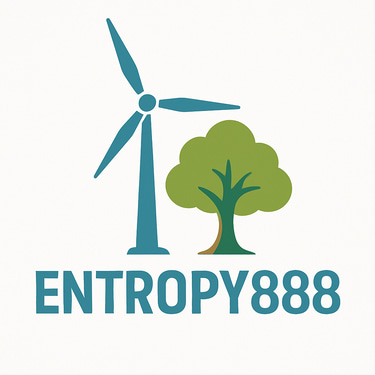Solar vs. Wind Power for Bitcoin Mining: Which Works Best?
Bitcoin mining thrives on cheap, abundant energy. As the industry moves toward sustainability, two renewable sources dominate the conversation: solar power and wind power. Both offer unique advantages, but which works best for powering Bitcoin mining operations? Let’s compare them across cost, availability, reliability, and long-term ROI.
Chris Boubalos
9/17/2025
The Case for Solar Power
Solar energy has exploded in popularity worldwide. Falling installation costs and abundant sunlight make it an attractive option for miners.
✅ Advantages of Solar for Mining
Abundant at scale – Solar parks can generate tens or hundreds of megawatts.
Falling costs – The price of photovoltaic (PV) panels has dropped over 80% in the last decade.
Predictable generation – Sunlight follows daily cycles, making planning easier.
On-site deployment – Solar panels can be installed directly at mining facilities.
❌ Disadvantages of Solar for Mining
Intermittent supply – Energy is only available during daylight hours.
Night-time gaps – Requires batteries or grid backup to mine 24/7.
Weather dependent – Cloudy or rainy conditions reduce efficiency.
High land usage – Large solar farms require significant space.
The Case for Wind Power
Wind energy has become one of the fastest-growing renewable sectors. It is particularly strong in coastal regions, open plains, and mountainous areas.
✅ Advantages of Wind for Mining
24/7 potential – Unlike solar, wind can generate power day and night.
High capacity factor – In windy regions, turbines deliver steady output.
Surplus availability – Oversupply often leads to curtailment, which miners can absorb.
Smaller land footprint – Turbines occupy less ground space than solar parks.
❌ Disadvantages of Wind for Mining
Location-specific – Only profitable in consistently windy areas.
Intermittency – Wind patterns vary seasonally and daily.
Infrastructure costs – Requires grid connections and turbine installation.
Noise and visual impact – Not always welcomed by local communities.
Cost Comparison
Solar: Lowest cost per kWh in sunny regions, but requires storage or hybridization to achieve 24/7 mining.
Wind: More consistent across day and night, but location-dependent and higher upfront costs.
In many cases, the best results come from hybrid systems:
Solar covers daytime peaks.
Wind covers night-time or cloudy periods.
Together, they create a more balanced energy profile.
Reliability and ROI
Solar Mining ROI
Works best in regions with high solar irradiation (Mediterranean, Middle East, Southwest US).
Payback period can be fast if paired with flexible mining that scales output by day.
Wind Mining ROI
Works best in regions with strong, steady wind resources (Texas, Northern Europe, coastal Greece).
More reliable for continuous 24/7 mining, especially without costly batteries.
Conclusion
So, which is better: solar or wind for Bitcoin mining?
Solar offers the lowest cost per kWh in sunny regions but struggles at night without storage.
Wind delivers more consistent 24/7 energy but requires specific locations with strong resources.
The real winner is a hybrid approach, where solar and wind complement each other — maximizing uptime and efficiency.
At Entropy888, we specialize in designing mining solutions that integrate renewable energy sources for maximum ROI and sustainability.
Contact
© 2025. All rights reserved.
Christos Boubalos - Business Development Lead +306972 885885 mob/whatsapp
christos@entropy888.com
-------------------------------------------
General Enquiries - info@entropy888.com
